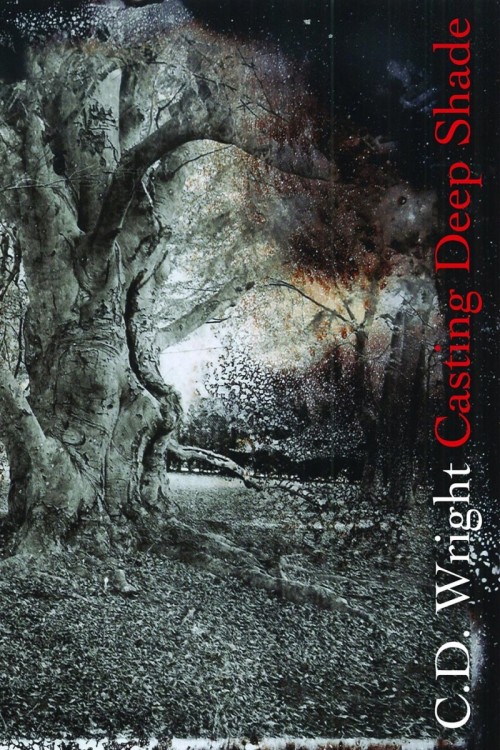by C.D. Wright
Copper Canyon Press, 2019
When we talk about trees, we often talk about the wilder among them, the rarer, the grander. And although beech trees can be wild and grand, they aren’t exactly rare. Pioneers in the understory, massive fixtures in parks and gardens, we see them all the time and so they are easily overlooked. In Casting Deep Shade, the poet C.D. Wright has done the opposite. She’s assembled and composed 242 pages of anecdote, observation, and beautiful unspooled lines of poetry about beech. Poetry is likely where this book will be shelved, but tree people should come to it, too, and recommend and pass it along: it’s a capacious, curious look at this familiar elephant-skinned tree species – and all the ways we have lived alongside it.
Along the way Wright gives us so much. That the Newport rich who planted so many now grand – and grandly dying – beeches preferred Scottish gardeners and English butlers. That low branches that take root are known as outriggers. That “mono-layered leafers like the beech avoid blocking each other’s light by forming a jigsaw-like pattern to capture the light. The leaf’s orientation is adjustable.”
We learn that the first page of literature in Sanskrit was written on beech, as well as Cherokee arborglyphs, even along the Trail of Tears. That of all the many beeches carved with names, there may be no more famous than the one at Coole Park in Ireland, which bears the names of Yeats, Bernard Shaw, and a host of other “Irish hotshot writers of the day.”
Beautiful, silvery photographs by Denny Moers are interspersed in a text that can almost feel like an abstract expressionist painting – and yet, even as Wright segues from this to that, you never feel any piece of the puzzle is out of place, which is all the more remarkable as Casting Deep Shade is published posthumously.
Wright, a wonderful Southern poet who spent much of her career in Rhode Island, passed away unexpectedly in 2016. That her last work has been published as expansively as she gathered it is a testament to her friends and collaborators and to the editors at Copper Canyon Press.


